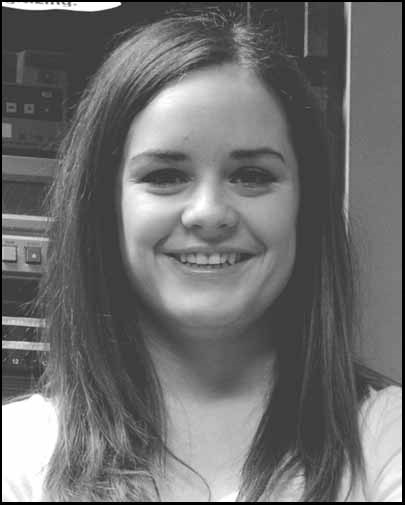In a few short weeks, Kristal Kaban's time in university will be finished. Soon, she'll receive her degree in accounting from the Southern Alberta institute of technology, well on her way to becoming a self-proclaimed, "bean counter".
But that's not where this story starts.
It begins in 2004. Kaban had just graduated from the Yorkton Regional High School, and was struggling to decide what step she was going to take next.
"I wasn't 100 per cent sure what I wanted to do," remembered Kaban.
She thought over her options, and talked to some friends. In the end, she decided that taking her first year of University classes at Yorkton's Parkland College seemed like the smartest move.
"It was cheaper to live with my parents. So, I figured that would help me figure out what I wanted to do, as well as not needing to pay as many bills," Kaban explained. "I could keep my job, live with my parents, and not have to worry about paying rent."
The idea of university is usually quickly followed by thoughts of dollar signs. When a student is unsure of the future, any type of budget wiggle room is welcome.
Gwen Machnee, who is university coordinator at Parkland College, finds the financial benefits are a big draw for those who decide to take classes in Yorkton. I'm guessing that's where she is, but the reader needs to know, not guess.)
"You're not having to rent an apartment in Saskatoon or Regina - where the rent will easily be $600 a month. So, for eight months of the year you're living without all the added expense."
She added with a laugh, "Mom's fridge is always full."
Having sailed through high school classes, Kaban assumed university would be the same.
"I thought it would be a piece of cake like high school. I took English and other subjects, and they marked a lot harder."
While there is nothing they can do about lowering the universities' expectations, Machnee said she believes adjusting to the new workload can be a lot easier at a campus like the Parkland College, where the class completion rate is 95 per cent.
"They do the transition from high school to university, but they're still living at home so they still have all their support systems," said Machnee. "Students who head off to one of the main campuses - like SIAST, U of S, U of R - they're doing that transition from high school and they're doing that transition from living at home to living away from home all at the same time."
"It definitely prepared me for actual college or university," Kaban agreed.
And larger campuses have begun to take their cues from regional colleges. Based on a similar model, schools - like the University of Regina or the University of Saskatchewan - are trying to pare down classroom sizes, and have begun grouping students who are interested in similar fields into common classes together. For Machnee, students in larger classes can feel like just another face in the crowd.
"The difference between here and the bigger campus is the personal touch. The instructor knows their name. [One the bigger campus'] you could be standing in front of your professor buying groceries, and they won't know who you are."
And accountability is one of the first challenges college students away from home face.
"If you're one of 200, no one is going to notice if you're not there," Machnee explained. "So, the temptation to stay in bed for that 8:30 class is very great."



